Lake Issyk-Kol in northeast Kyrgyzstan is said to be the second largest alpine lake in the world (after Lake Titicaca in South America). Just what exactly the definition of alpine is, is not clear. But we have no problems in repeating this fact since it appears very often in print. Nearly 170 km long and at times 70 km across, it does resemble the ocean in some parts. The lake lies between the northern and southern arms of the Alatau sub range. These two arms together form the northern arm of the Tian Shan (Chinese for Heaven Mountain) mountains that straddles the countries of China, Kazakhstan and Kyrgyzstan. The lake never freezes due to a combination of extreme depth, thermal activity and salinity.
The town of Balykchy lies at the western apex of the lake and is the first stop on the lake if you arrive by road from Bishkek covering a distance of 180 km in good time due to the excellent 2 lane carriageway. Past Balykchy, the road splits into the north and south arms that effectively circle the lake. The road is paved on both sides and one can get to the city of Karakol near the eastern end of the lake. Karakol is the provincial capital of the region and is also the base for exploring the area around the lake.
Popular destinations from Karakol include Altyn Arashan (a hot spring facility), beautiful Lake Ala-Kul which requires a combination of strenuous trekking and scrambling and Jeti Oguz (where you can see red rock formations like the kind you see in the southwest United States). One can construct several day trips or chain them together as a multi-day trek (like our Israeli friends Mor and Ofer did before we met them in Arslanbob). The high season for these trips is during the summer months and it was almost over by the time we reached Karakol. In fact, a travel agent in Bishkek had warned us that temperatures at the higher elevations were already well below freezing and we should not spend nights there without adequate protection.
We opted for a single day trip to the Jeti Oguz area and managed to get to the base of the hike at Jeti Oguz village. Near the entrance to the trail are a series of dramatic red rock formations. Coming in from the main road, one can see a formation that looks like a split mountain and this is called Broken Heart after a local legend (we need not get into the details here!). From the other side, the same mountains have the appearance of seven bluffs and this gives rise to the name Jeti Oguz (Seven Bulls). At the base of this formation is the Jeti Oguz Sanatorium whose heydays were during the Soviet era. Yuri Gagarin once enjoyed their services and more recently, Boris Yeltsin and Akaev (then President of Kyrgyzstan) met here in 1991.
On our way to Jeti Oguz, an elderly Kyrgyz gentleman boarded the shared taxi and was delighted to see Indian origin visitors. He did not mention Mithun Chakraborty but spoke of the Raj Kapoor era and also mentioned the names of the Nehru-Gandhi family. He gave us an apple and stopped the car outside Broken Heart just to show it off to us.
On being dropped off at the base of the mountain (14 km from the main highway that formed the southern arm of Lake Issyk-Kol) we walked 1.5 km back the way we came to explore the red rock formations. After viewing them to our satisfaction, we went back to the end of the road. We bought water from a store whose owner expressed surprise on seeing us. When he heard that we were of Indian origin, he sighed deeply and went quiet for a moment as if the very mention of the country recalled several past delights. He then composed himself and insisted on taking pictures of the two of us with the red rock backdrop. When he learnt that we were planning to return that very afternoon, he told us that he would arrange for a taxi in case we could not find any. This was a very reassuring offer as we did not see any other taxis that operated from this remote location as this was low season (regular minibus service operates during the summer months).
A 5 km long trek takes one past the lower Jeti Oguz canyon crossing several foot bridges across the flowing eponymous river. After the 5th bridge, the trail opens to a broad valley called Svetov Dolina (Valley of Flowers). That name meant nothing in September as it was well past the flowering season. But the vistas of the wide valley with the mountains bearing permanent snow as well as a good layer of snow from the morning's downpour were spectacular. A few yurts dotted the landscape and several groups of cattle, sheep and horses completed the enchanting picture. Except for a few vehicles that passed us (some carrying visitors) we did not encounter anyone else on our onward trip.
We had prepared ourselves with power bars and extra layers of clothing in case the bad weather from the morning (which almost led to a cancellation of the hike until the weather cleared by 9 am) returned. But the weather stayed sunny and relatively warm. We came to a small group of yurts with a banner that read "Golden Hotel" and asked the woman there if we could get vegetarian food. To our surprise, the answer was Yes and without any waiting too. An Austrian couple had the same request and were already being served a vegetarian lunch. The potatoes cooked with onions and tomatoes were delicious. Our fellow guests were in the midst of a very fascinating journey. They had purchased two horses and were covering a wide part of the mountainous country on horseback for several weeks. At the end of their journey, they would sell their horses and go back home!
We learnt that the "Golden Hotel" yurt camp would have packed up that morning and closed for the season. But the rains that came down that morning had made the yurts wet which needed to dry and so delayed their departure by a day. We declined their offer to stay the night in the "hotel" and returned back down to base in the afternoon.
When we returned we were dismayed to see that our friendly store owner was not at the store. In his place was a woman. There were a couple of "taxis" waiting but their asking rate for Karakol was too much. We knew that we did not have an alternative but decided to wait it out in the nice afternoon sunshine with a nice cool drink brought from the store. After waiting a little while, we approached the woman at the store and showed her the picture that we had taken with the store owner in the morning. She understood and gestured that he won't be back till the evening. We explained that he had offered to help with "taxi". She pointed outside to the two vehicles and when we told her they were asking too much, she said that that was the fair price.
We came out and waited for something to give. It did in the form of a private vehicle which we waved down. We got in the back along with another man who seemed to be in the same predicament. No words were spoken as the driver simply drove on. But after a little while, the inevitable Shah Rukh Khan/Mithun Chakraborty exchange took place and the driver dropped us on the main highway since he was turning left towards Bishkek. He refused to take any money. Within minutes, we were on our way back to Karakol on another passing vehicle that dropped us off for a trifle.
Google Maps Link
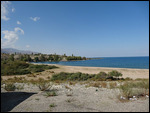

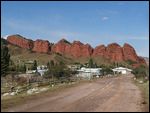
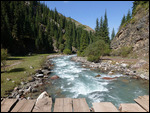
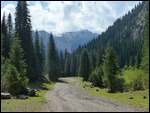
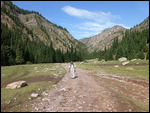
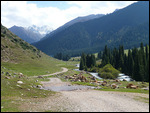
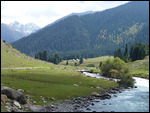
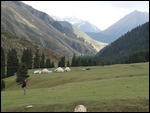
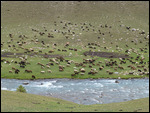
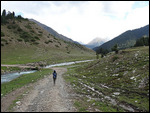
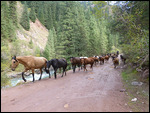

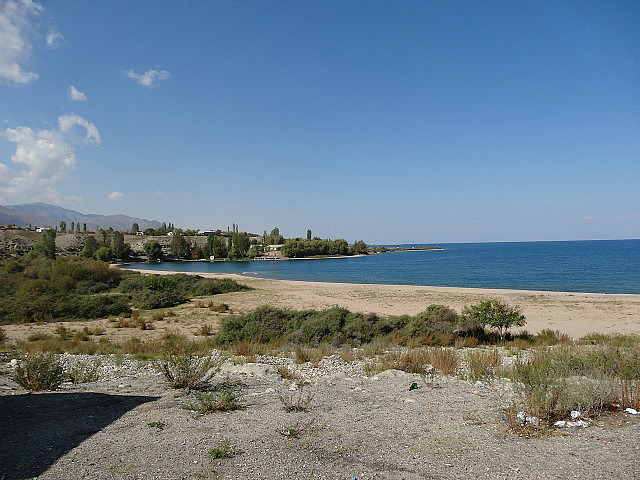
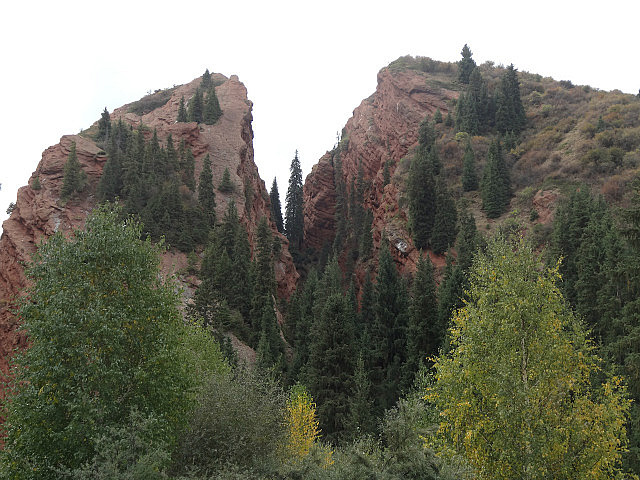
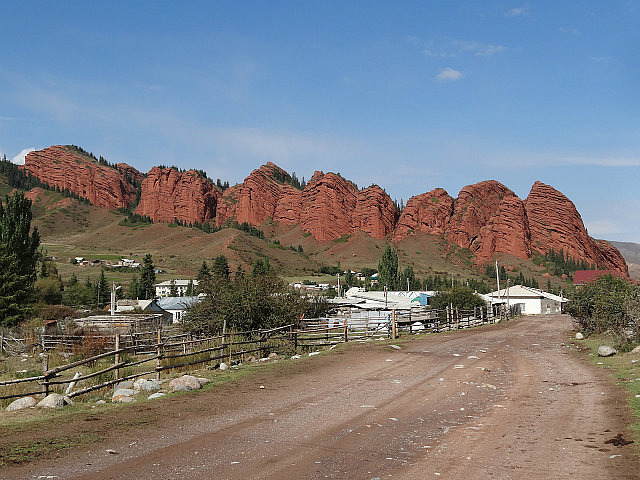
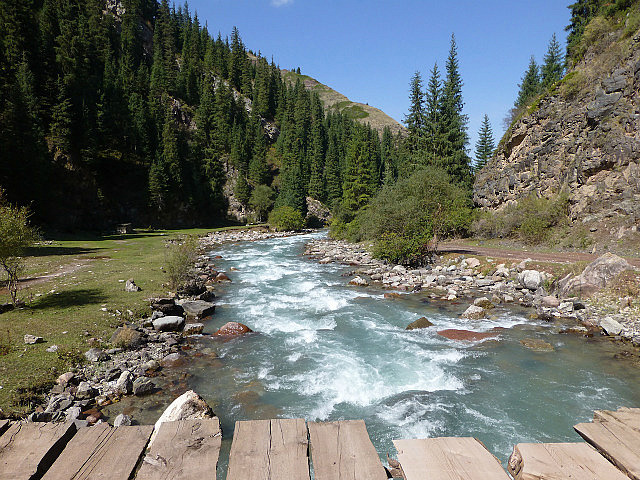
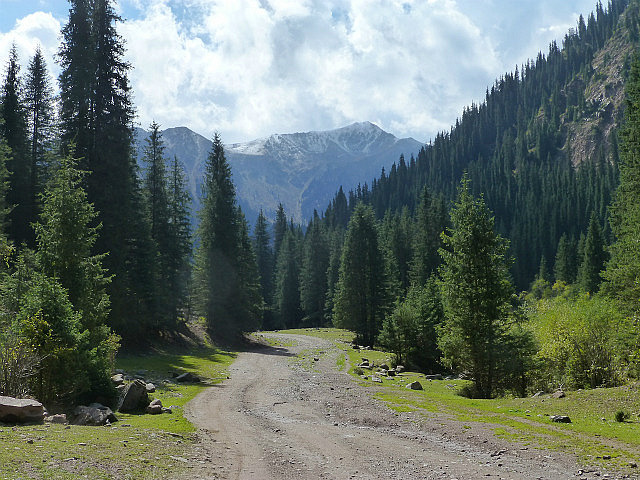
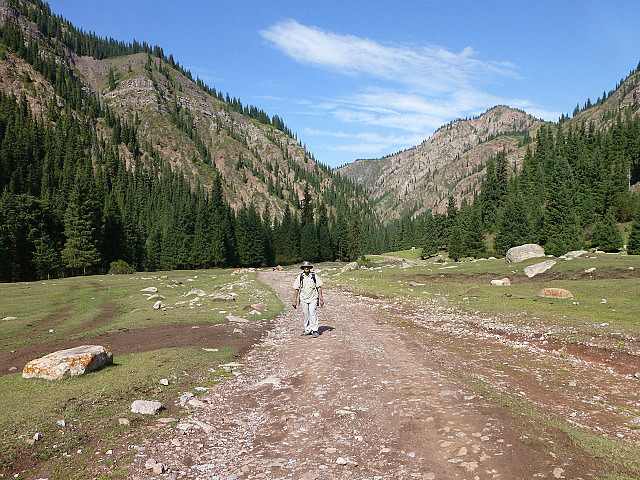


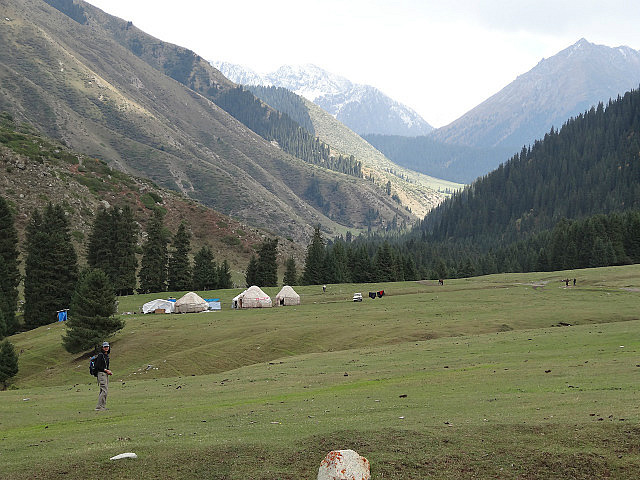
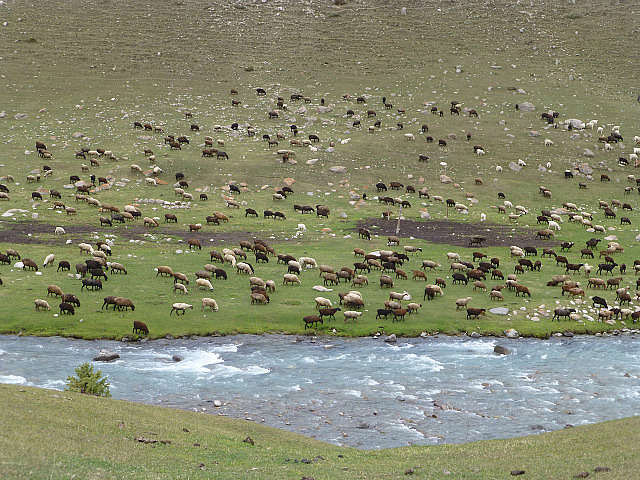
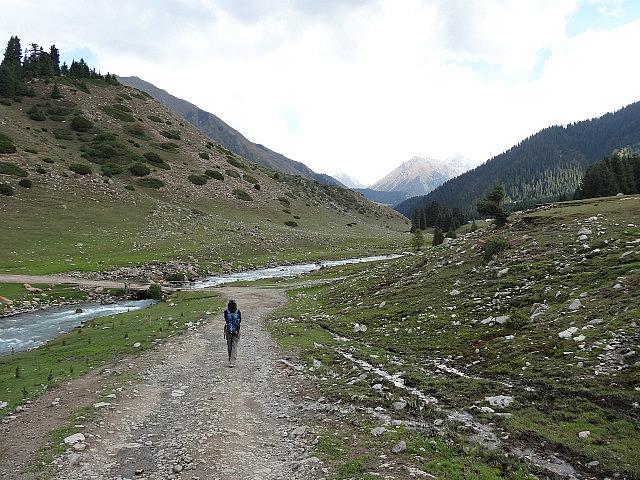
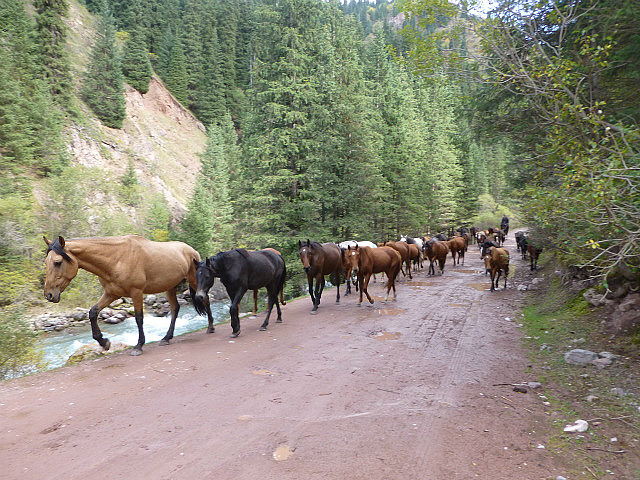
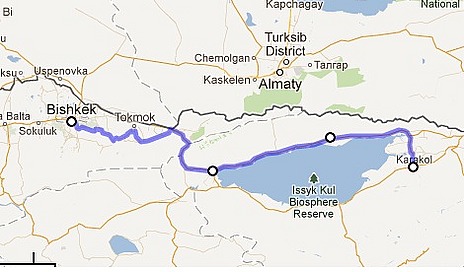
Comments